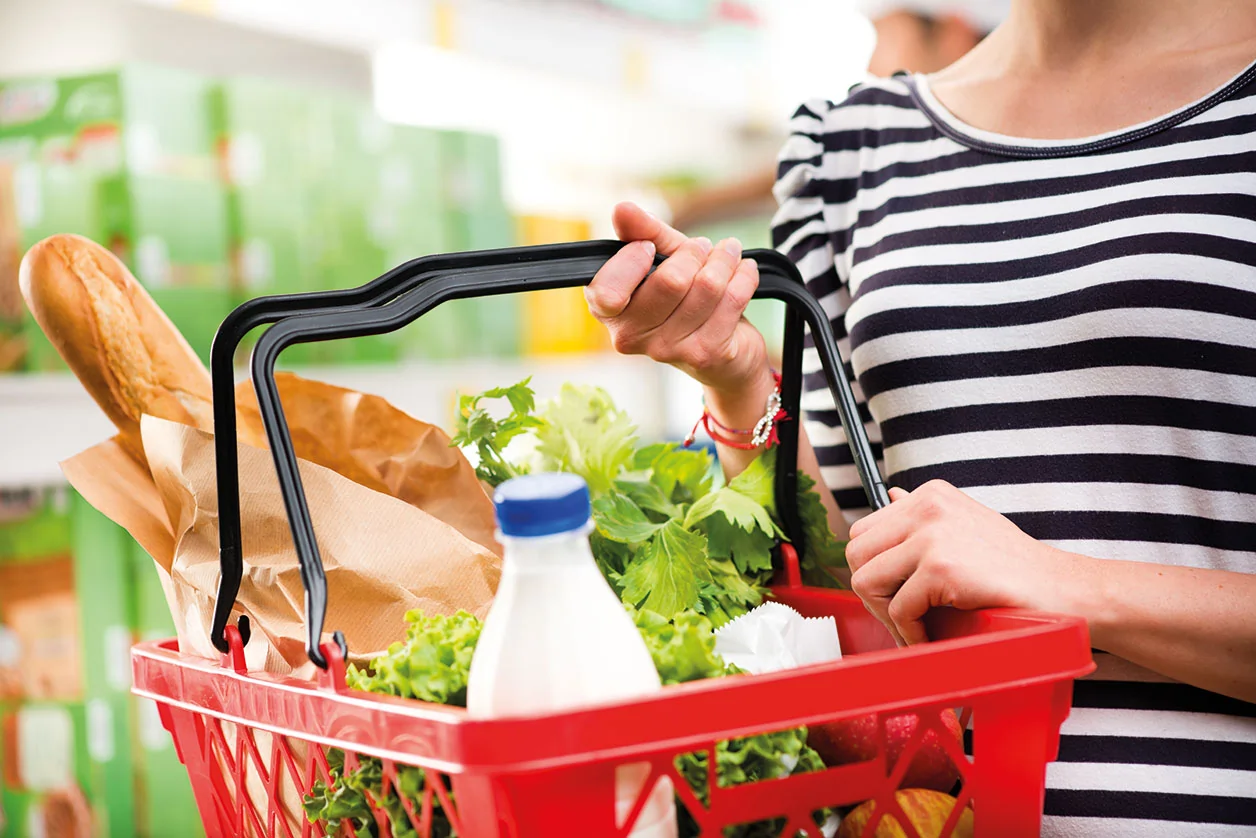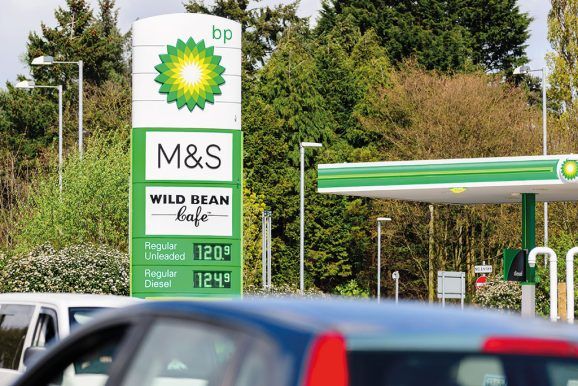How convenience retail can up its game

John E. Kaye

Oliver Shaw of Kalibrate analyses what UK convenience stores and service stations can do to build on the customer increase resulting from the recent health crisis
During the Covid-19 pandemic, the value placed on convenience was at its highest as accessible local retail outlets became essential services. Changing routines disrupted how people worked and relaxed, and, as a result, spent.
However, the recent easing of restrictions has seen consumer confidence return to high streets and shopping centres. This poses challenges for convenience stores, as location influences how and when a consumer visits your store, which consequently impacts what consumers are attracted to in-store. Now retailers must again re-evaluate where the most lucrative locations are.
Because ultimately, how can local convenience businesses prosper in such a competitive and changing retail environment, which continues to be impacted by the wider economic pressures and supply disruption?
Keeping up with ever-changing consumer habits
Shopping habits are heavily influenced by the need for convenience, and consumers are willing to pay a higher price than they would at a large grocery store in exchange for that ease.
The convenience and grocery sector makes up for 90% of Britain’s food shopping, and it became essential to consumers when lockdowns made local shopping more prominent. What’s more, when millions were working from home every day, they were spending less time in city centres and developing different travel habits.
But with a return to normal – or at least this new normal – for convenience operators, the competitive landscape has shifted as other retailers have adapted to meet changing consumer needs. Organisations that want to stay ahead have access to vast quantities of data to understand the impact of changing behaviour, from their own loyalty insight to mobility data to sophisticated demographics. In fact, there has never been more data available than there is today.
Reshaping retail
While we have seen levels of normality return, public transport use is still below pre-pandemic levels. The rise of home or hybrid working models has seen consumers change their day-to-day routines – and many of these shifts are permanent.
Consumers have recognised the value of their time, and convenience and fuel retailers must respond to this need by adapting their offerings. Convenience stores (c-stores) and service stations must become places where people want to shop. Well maintained toilets are a must. Wi-fi accessibility for those visiting service stations. Then for c-stores, parcel pick up and drop off points need to be provided. A well-stocked chilled foods section is essential – a diverse selection of food offerings, that goes beyond sandwiches and takeaway coffee, can help to differentiate from the competition.
Then there is a new concept taking convenience shopping by storm with the likes of Amazon Go leading the industry. Tapping into shoppers’ daily need for convenience, retailers like Amazon and Tesco are implementing technology that uses a combination of cameras, sensors, computer vision techniques, and deep learning to allow customers to shop and leave the store without queuing to pay.
Driving convenience
And of course, how c-stores and service station retailers apply convenience to drivers is key. Looking forward, as the United Kingdom lays out its plan to make all new cars and trucks electric by 2050, the £1bn investment to electrify our roads presents another opportunity to do this. A strategy that cracks the EV conundrum and understands changing consumer needs will be imperative. The likes of Waitrose and stores like Co-op and Nisa Local have already formed partnerships with EV charging companies to attract drivers willing to invest in EVs.
The appetite is there too – 41% of EV drivers want charging points at existing fuel stations and nearly three-in-five (59%) of drivers spend more money at shops or businesses that offer EV charging. Convenience stores that can equip charging points may stand to benefit from a variety of advantages, including direct revenue from customers, higher ROI and an enhanced reputation as a forward-thinking company.
Supercharging the service stations of the future
It is important to be realistic, of course. EV charging stations require capital investment, but the opportunity is significant given EV sales more than doubled in 2021.

Simply installing chargers at every service station or adding just one or two outside the local c-store isn’t the answer yet. It is critical to understand where to locate them, and when. A data-first approach will be paramount. To begin with, businesses need to use analytics to understand and identify the most advantageous areas for EV investment based on current and projected levels of EV adoption.
Now is an excellent time to evaluate your fuel retail offering and take steps to maximise the potential of your location, in relation to customers and where they live, work, and play. Understanding demand alongside situational characteristics and competitive intensity impacts is the difference between a successful, profitable site and a painful, costly misstep.
Planning ahead
The pandemic showed us the value of having a flourishing retail community close to home. Local hospitality businesses were an amazing example of a sector that developed by adding new services such as food and drink bundles and online home delivery, maintaining as close to “business as usual” as possible – all while remaining profitable.
But consumer habits and behaviours have changed. In some areas, we’ve reverted to pre-pandemic routines. In others, the return looks unlikely. Forecourts must adapt quickly by investing in an insight-driven approach, to understand their role in their customers’ new normal.
ABOUT THE AUTHOR

Further information
Sign up to The European Newsletter
RECENT ARTICLES
-
 NOMOS Glashütte named Germany’s best sports watch brand 2025
NOMOS Glashütte named Germany’s best sports watch brand 2025 -
 Stars, supermoons and shooting fireballs: why November’s sky is unmissable
Stars, supermoons and shooting fireballs: why November’s sky is unmissable -
 “Derbyshire is both a treasure and a responsibility” — William Glossop on the New Heritage Shell Guide
“Derbyshire is both a treasure and a responsibility” — William Glossop on the New Heritage Shell Guide -
 Inside the Maldives’ most exclusive getaway
Inside the Maldives’ most exclusive getaway -
 Tripadvisor says this is one of the best hotels on Earth — we went to see for ourselves
Tripadvisor says this is one of the best hotels on Earth — we went to see for ourselves -
 Britain’s most storied guidebook series returns with a Derbyshire volume that mixes celebration with stark warnings of industrial devastation
Britain’s most storied guidebook series returns with a Derbyshire volume that mixes celebration with stark warnings of industrial devastation -
 Michelin shortlists Croatia’s Villa Nai 3.3 as one of the world’s best-designed hotels
Michelin shortlists Croatia’s Villa Nai 3.3 as one of the world’s best-designed hotels -
 Drive your own safari: why Kruger is Africa’s most accessible wildlife park
Drive your own safari: why Kruger is Africa’s most accessible wildlife park -
 Oggy Boytchev on Sardinia, an island of contrasts
Oggy Boytchev on Sardinia, an island of contrasts -
 At the edge of Europe. A cruise gateway on the Russian frontier
At the edge of Europe. A cruise gateway on the Russian frontier -
 The European Reads: What a 2,000-year-old philosophy can teach us about power
The European Reads: What a 2,000-year-old philosophy can teach us about power -
 Bicester Motion October 2025 Scramble: 2025’s final ode to British motoring culture
Bicester Motion October 2025 Scramble: 2025’s final ode to British motoring culture -
 Glastonbury and Coachella set the stage for $400bn music tourism growth
Glastonbury and Coachella set the stage for $400bn music tourism growth -
 Wartski at 160: Fabergé dealer and royal jeweller stages landmark brooch exhibition
Wartski at 160: Fabergé dealer and royal jeweller stages landmark brooch exhibition -
 Beyond ecology: Pajot Yachts and the art of eco-integration
Beyond ecology: Pajot Yachts and the art of eco-integration -
 Diving into… Haute-Savoie, France
Diving into… Haute-Savoie, France -
 The October night sky and the return of Orion the Hunter
The October night sky and the return of Orion the Hunter -
 On the trail of Captain Corelli: discovering Paros and Antiparos on two wheels
On the trail of Captain Corelli: discovering Paros and Antiparos on two wheels -
 Fancy a sauna on prescription? Sweden becomes the first country doctors can recommend for your health
Fancy a sauna on prescription? Sweden becomes the first country doctors can recommend for your health -
 The 'most famous BMW ever', Warhol’s Pop-Art Racer, gets historic honour
The 'most famous BMW ever', Warhol’s Pop-Art Racer, gets historic honour -
 We took our dogs on a motorhome city break to Cambridge – here’s what happened
We took our dogs on a motorhome city break to Cambridge – here’s what happened -
 Jackie Stewart leads tributes as motorsport legends converge on Goodwood Revival
Jackie Stewart leads tributes as motorsport legends converge on Goodwood Revival -
 The European Reads: two new guides for adults living with late autism and ADHD diagnosis
The European Reads: two new guides for adults living with late autism and ADHD diagnosis -
 The five superyacht shows that matter most
The five superyacht shows that matter most -
 A world in gold: Andersen Genève launches the Communication 45
A world in gold: Andersen Genève launches the Communication 45



























